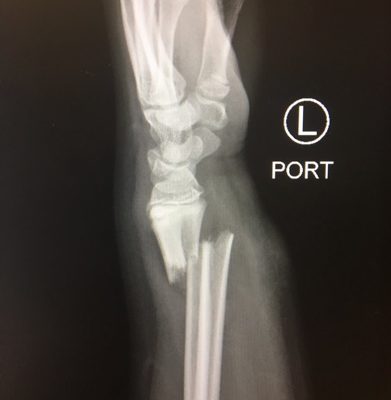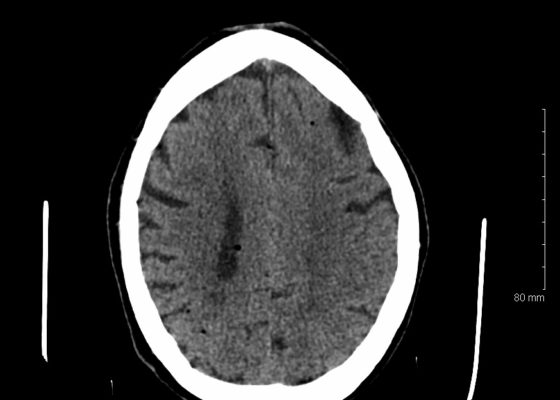Procedures
A Low-Cost, Reusable Ultrasound Pericardiocentesis Simulation Model
DOI: https://doi.org/10.21980/J8TD1JThrough the use of this model and skill session, learners will be able to: 1) discuss the indications, contraindications, and complications associated with ultrasound guided pericardiocentesis; 2) demonstrate an ability to obtain subxiphoid and parasternal long views of the heart; 3) demonstrate an ability to identify pericardial fluid in these two views; and 4) demonstrate proper probe and needle placement to successfully perform an ultrasound guided pericardiocentesis in these two views.
Low-Cost Portable Suction-Assisted Laryngoscopy Airway Decontamination (SALAD) Simulator for Dynamic Emesis
DOI: https://doi.org/10.21980/J8362BThe economic and dynamic SALAD innovation recreates an actively vomiting patient and replicates visual obstruction from fluid contents during airway management.By the end of the session, learners are expected to: 1) discuss the risks, benefits, indications and contraindications associated with intubation of a vomiting or hemorrhaging patient. 2) Work with colleagues to effectively stabilize a patient who is actively vomiting or bleeding during airway management. 3) Competently perform intubation in the acute setting of visual obstruction from active emesis, hemorrhage, or massive regurgitation. 4) Increase speed and dexterity of intubation by applying the SALAD method when fluid obstructs visualization of the larynx.
Pediatric Sedation for Forearm Fracture
DOI: https://doi.org/10.21980/J8CS7KAt the end of this simulation, participants will: 1) review options for pain control in pediatric patients, 2) perform a pre-sedation history and physical exam, 3) review the indications and contraindications for pediatric moderate sedation, 4) understand components of consent, and get consent from the patient’s parent, 5) list medication options for moderate sedation in a pediatric patient and review their appropriate doses, indications, contraindications, and side effects, 6) discuss management of moderate sedation complications, and 7) review criteria for discharging a patient after sedation.
Beware the Devastating Outcome of a Common Procedure
DOI: https://doi.org/10.21980/J8T336Non-contrast head computed tomography (CT) demonstrates multifocal bilateral hypodense lesions (white arrows) representing air emboli. Note the lesions are located in the intra-axial distribution which indicates an underlying vascular origin.
Realistic and Inexpensive Ultrasound Guided Paracentesis Simulator Using Pork Belly with Skin
DOI: https://doi.org/10.21980/J8NK9RBy the end of this instructional session learners should be able to: 1) Discuss the indications, contraindications, and complications associated with abdominal paracentesis; and 2) competently perform an ultrasound-guided abdominal paracentesis on a simulator and remove fluid.
Low Cost Task Trainer for Neonatal Umbilical Catheterization
DOI: https://doi.org/10.21980/J8HW6GBy the end of this instructional session learners should: 1) Discuss the indications, contraindications, and complications associated with umbilical catheterization. 2) Competently perform umbilical catheterization on the task trainer. 3) Demonstrate proper securement of the catheter.
A Low Cost Escharotomy Simulation Model for Residency Education
DOI: https://doi.org/10.21980/J8D34VBy the end of this educational session, the learner will be able to: 1) Understand the indications for an escharotomy. 2) List equipment needed to perform an escharotomy. 3) Demonstrate how to perform an escharotomy. 4) Perform an escharotomy and experience the sensation of cutting through simulated burned tissue. 5) Understand post-escharotomy management and referral to specialist.
Procedural Sedation for the removal of a rectal foreign body
DOI: https://doi.org/10.21980/J81332Axial and coronal views on CT showed evidence of a large, tube-shaped foreign body in the rectum (see arrows) without evidence of acute gastrointestinal tract disease.
Utilizing the Flipped Classroom, Simulation-Based Mastery Learning and Group Learning to Teach and Evaluate Lumbar Puncture Skills
DOI: https://doi.org/10.21980/J8RW58The goal of the curriculum is to teach and evaluate senior medical students / emergency medicine residents on the performance of a lumbar puncture using a group learning protocol. At the completion of the training session, learners should be able to: 1) Demonstrate how to perform a LP on an adult patient by achieving the minimum passing standard on the checklist, 2) state the indications and contraindications of performing a LP, and 3) state the potential complications that can occur after performing a LP.
Laceration Repair for Emergency Physicians
DOI: https://doi.org/10.21980/J8TP7KBy the end of this educational session, the learner will: 1) understand indications and contraindications for suture repair of lacerations, 2) compare when various types of wound repair are appropriate: such as sutures, staples, tissue adhesive and tissue tape, as well as what size of suture material is appropriate depending on the location of the laceration on the body, 3) list the appropriate types and sizes of suture for various locations and types of lacerations, 4) understand the definitions of the three types of wound closure (primary, secondary and delayed primary) and when they are appropriate, 5) understand the basics of local anesthetic including which anesthetic to use and the maximum dose for each, 6) understand when sutures should be removed, 7) list various suturing techniques and their indications, and 8) improve comfort levels in performing various suturing techniques including: simple interrupted, horizontal mattress, vertical mattress, and corner repair. If desired, instructors can individually assess the learner sutures using the attached complete validated suture checklist to show proficiency in these techniques. Please see the brief wrap-up section at the end of the manuscript.







